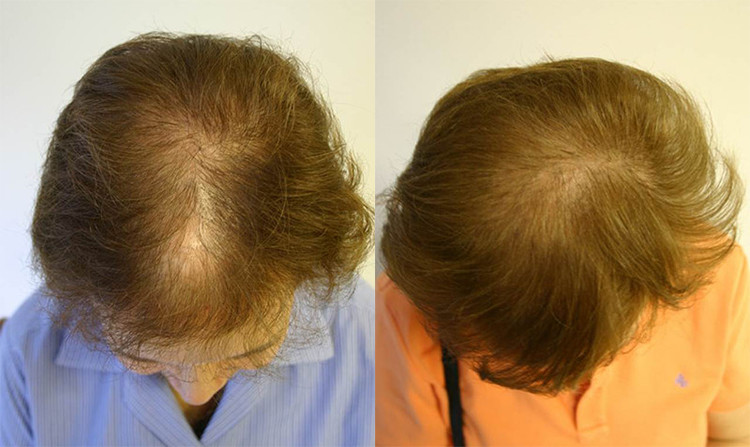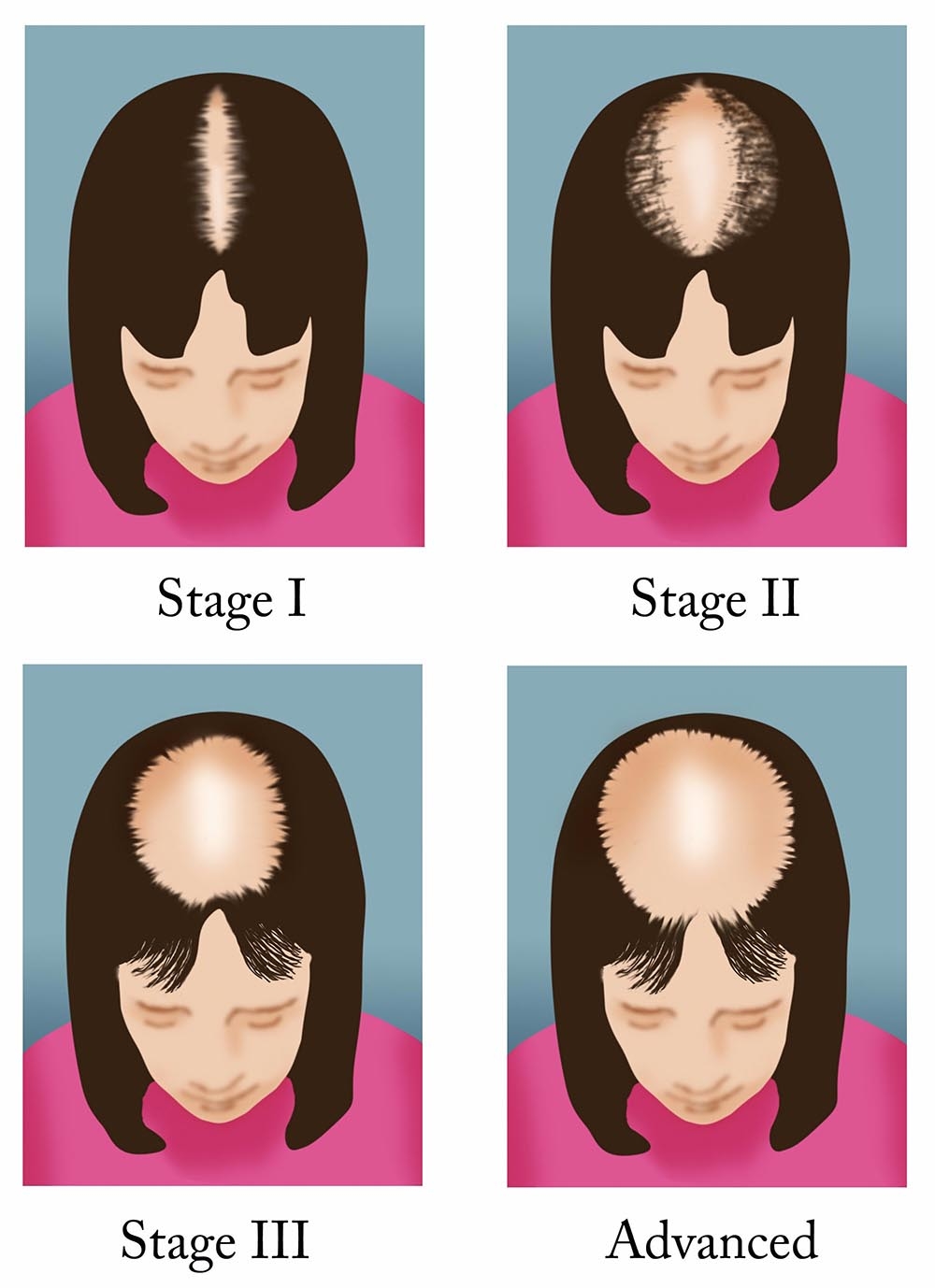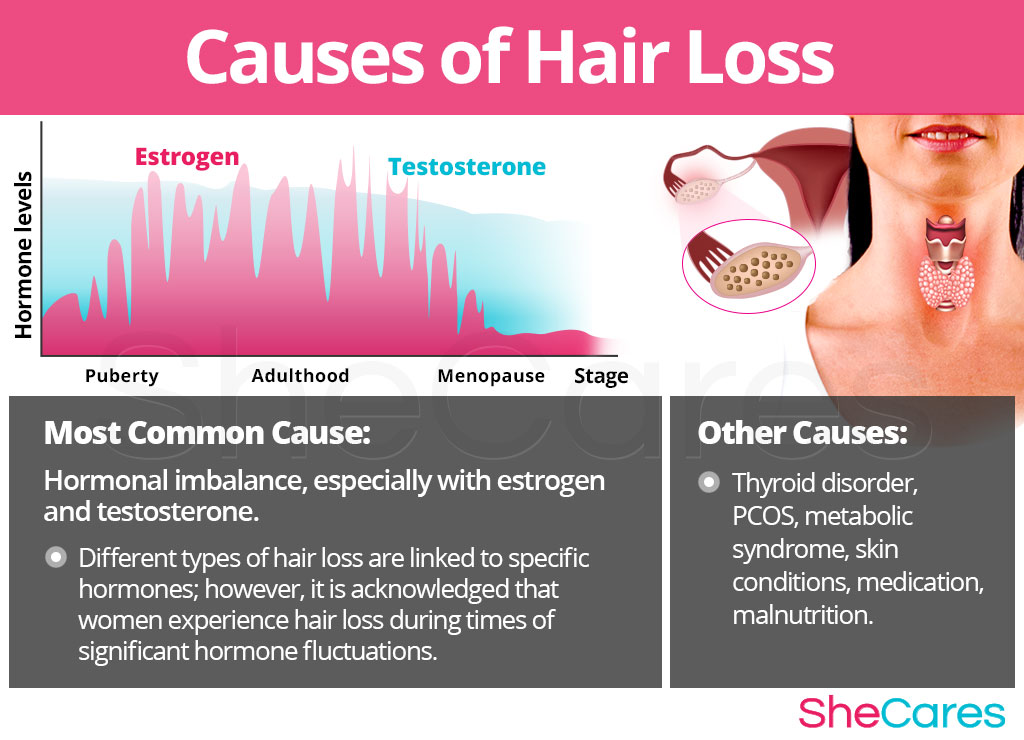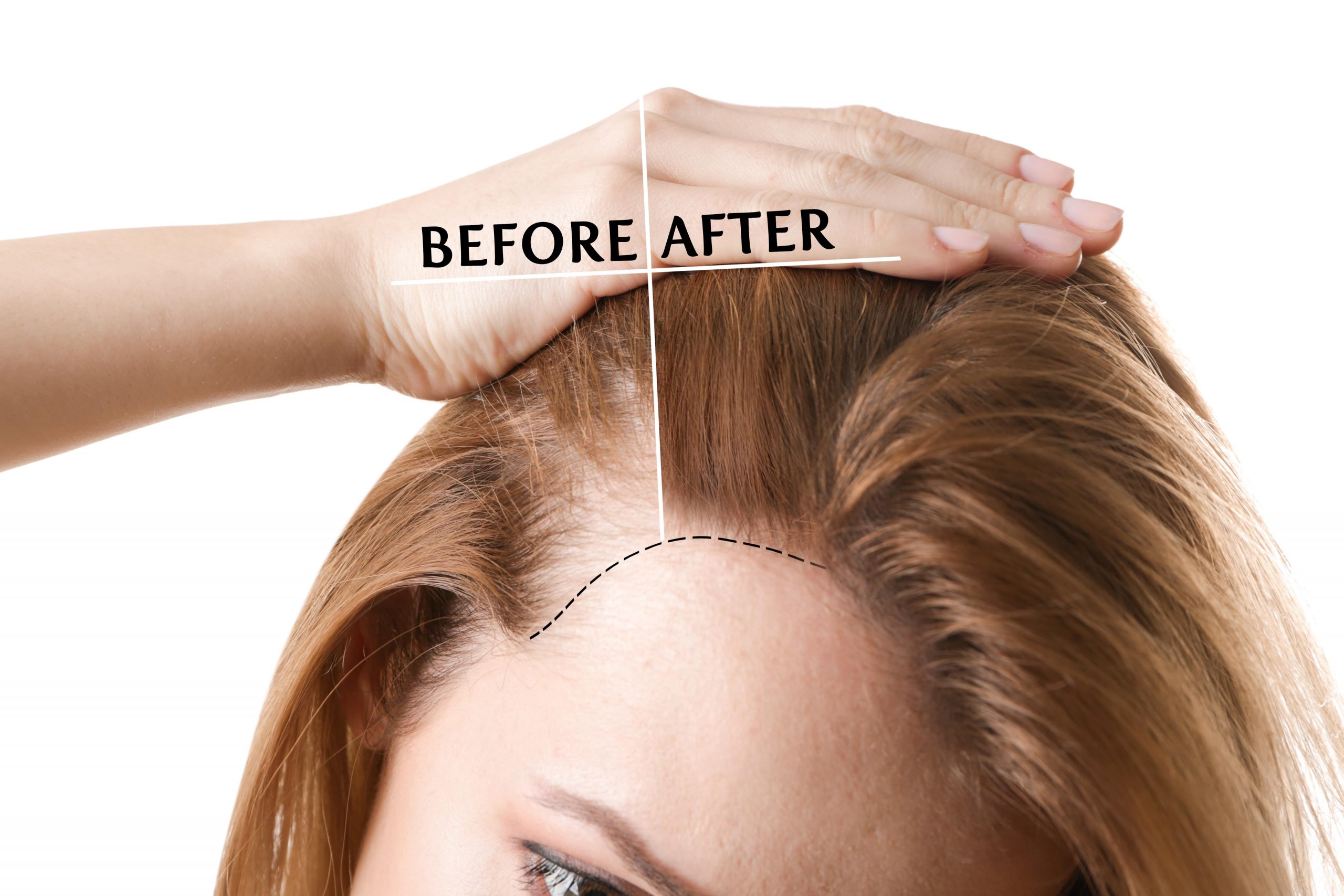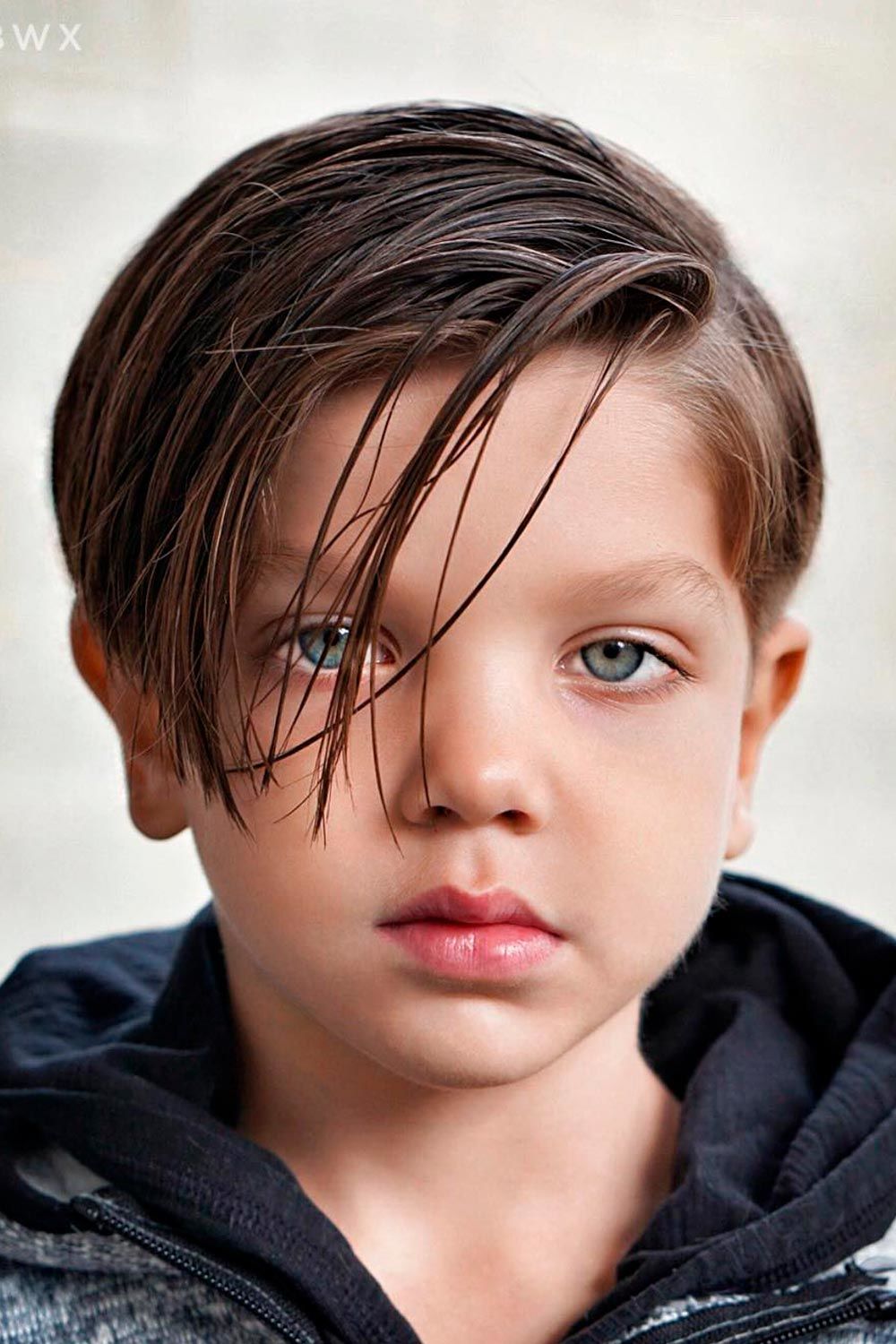Table Of Content
Hair is also an excellent insulator, and it can extend our sense of touch so that we can "feel" something even before it directly touches our skin. Scientists also believe it serves a social communication purpose. Different hair types may benefit from different types of conditioners, so ask a stylist if you’re unsure of what type of conditioner your hair needs (Dias, 2015).
How long does it take for hair to grow back after hair loss?
Hair Loss After COVID-19: Why It Happens and How to Treat It SELF - Self
Hair Loss After COVID-19: Why It Happens and How to Treat It SELF.
Posted: Thu, 26 May 2022 07:00:00 GMT [source]
Healthy hair usually grows about 0.35 millimeters (mm) every day. That's roughly one-half inch every month and about 6 inches every year. Most adults have between 80,000 and 120,000 hairs on their head that grow like this, and it is normal to shed between 100 and 150 scalp hairs every day. To dispel a myth right off the bat, no hair product, supplement, or other intervention will make your hair grow faster than that 1/2-inch per month. "There hasn't been anything proven to make hair grow faster," says Friese. Though hair grows so slowly that it's barely perceptible, it typically grows at least half an inch each month, according to Gretchen Friese, BosleyMD Certified Trichologist.
When to see a doctor about hair growth
Some other nutrients you may want to look for are iron and biotin. If you believe that you’re losing your hair at a faster rate than you’re used to, talk with a doctor. An underlying condition that’s disrupting the stages of hair growth may be to blame, and treating it promptly may help slow hair loss and preserve the healthy hair you have left.
How the Nomadic Women of Chad Are Keeping the Ancient Hair-Care Ritual of Chébé Alive - Vogue
How the Nomadic Women of Chad Are Keeping the Ancient Hair-Care Ritual of Chébé Alive.
Posted: Tue, 08 Mar 2022 08:00:00 GMT [source]
Turn Things On Their Head
Bond-building treatments, such as Olaplex or similar products, are designed to repair and strengthen damaged hair. While they don't directly stimulate hair follicles or increase the rate of hair growth, they may indirectly support healthier hair growth by improving the overall condition of the hair. There is evidence to show that peppermint oil may help promote hair growth by increasing blood circulation to the scalp, which delivers vital nutrients and oxygen to the hair follicles. In turn, this activates the follicles and encourages the early onset of the anagen phase of the hair cycle. When applied to the scalp, minoxidil is believed to widen blood vessels, promoting increased blood flow to hair follicles. This improved circulation is thought to stimulate hair growth and is often used to address conditions such as androgenetic alopecia, commonly known as pattern baldness.

Understanding how fast your hair grows can offer insights into issues related to hair thickness, health, and potential strategies for speeding up its growth. In some cases, supplements containing vitamins and minerals specifically targeted for hair growth, such as collagen and amino acids, may be beneficial. However, it's essential to consult with your healthcare provider before starting any new supplement regimen. A theory is that herbs might encourage blood flow to the scalp, which reduces inflammation and supports a healthy environment for hair growth.

As the blood vessels feed the roots with oxygen and nutrients, they multiply and grow into hair. Keep reading for more information on how hair grows and the various factors that affect the speed of its growth. However, lots of different factors affect the speed of hair growth. Using a conditioner can help seal, hydrate, and protect your hair. In addition, conditioners make your hair shinier and easier to comb. This can help cut down on hair breakage, especially if you have long hair.
As I mentioned before, a healthy diet is essential for healthy hair growth. If you’re not getting all the vitamins and minerals you need from your diet, you may experience slowed hair growth or hair loss. Nutrient deficiencies can also cause brittle hair that’s more prone to breakage. High levels of stress can disrupt the hair-growth cycle and lead to hair loss. Cortisol is a hormone produced by the adrenal glands in response to stress. Hair growth is largely impacted by genetics, but other factors can affect how long and strong your strands are.
Hair Growth Calculator Formula
Many factors — including genetics, sex, and age — can influence the speed of hair growth. When you start the medication, it’s normal to see more hair loss in the first few months. New hair growth is usually noticeable by the third or fourth month of treatment, and even more noticeable by month six. Often people take finasteride for a year or more (Zito, 2022; Shin, 2019).
Hair grows at about half an inch per month, and the hair on your head usually grows for about six years before falling out. Your hair is in a constant state of growth and renewal, and it’s normal to shed hair each day, even as new hair grows. “For sensitive or acne-prone skin, either frequent pillowcase changes or wearing a hair bonnet after serum application may be helpful,” she says. Meanwhile, “the goal of a serum is to target the hair follicle directly by delivering compounds that may allow for improved or optimal hair growth,” says Dr. Mirmirani. These ingredients are those that aren’t typically found in the diet, such as minoxidil and plant-based compounds.
If you notice hair thinning rather than hair growth, Ro can connect you with healthcare providers who can recommend over-the-counter or prescription medications to help treat your hair loss. Wearing a hat or scarf when you’re out for long periods in the sun can help prevent ultraviolet (UV) radiation from damaging your scalp, hair shafts, and hair follicles. Protecting your scalp can keep your hair in peak shape for hair growth (Gherardini, 2019). Generally, people from ages 15 to 30 see the fastest hair growth rate compared to other age groups. Hair tends to grow slower past age 30 and even slower still for older individuals.
That’s the deal with hair on your head—keep in mind that hair growth rates vary based on anatomic location. “Some hair follicles are dormant, meaning the hair is not dead but rather ‘asleep’ for a period ranging between two to 12 months. Others are terminal, as in actively growing, and some do not grow at all or only grow after stimulation under various conditions,” says Vasiloudes. According to The Trichological Society, the average hair growth rate is between 0.5 and 1.7 centimeters (0.2 to 0.7 inches) per month. This varies based on multiple factors, which will be discussed in detail below. While PRP therapy may stimulate dormant hair follicles and potentially enhance the overall quality of hair, it doesn't directly affect the rate at which hair grows.
If you don’t color your hair, you could discover how much your hair grows in a month by taking pictures of your hair with monthly intervals. It is crucial to keep your hair in the same position and take the photos from the same angle. Another way of checking how much your hair has grown in a month is simply measuring it with a measuring tape if you have an even haircut. The first method for measuring how much does your hair grow in a month is very simple. However, this way to learn how much hair grows in a month works only if you color your hair. Without these adjustments, you may have unevenness or awkward lengths that compromise your style.
Another factor to consider is to avoid heavy lawn use of foot traffic directly after you’ve put down grass seeds. “You should limit foot traffic on the area for 2-3 weeks to minimise damage to the rooting in seeds,” adds Chrissie Handley, a lawn care specialist at Online Turf. Once you’ve sown your grass seed, there are a few things you need to do to ensure healthy growth and lawn care maintenance. Hot tools like straighteners and curling wands dry out your hair, which can lead to breakage. Of course, the best thing for your hair is styling your hair with heatless hairstyles. Some researchers think that how fast hair grows is dependent on the season.
Research has shown that men’s hair tends to grow faster than women’s hair. Embarking on the journey to grow short hair into longer locks requires patience and a strategic approach. This section will explore effective tips and practices to get you through the grow-out phase and get the longer hair you desire. Your best bet is to eat a balanced diet and drink plenty of water. Your new hair may grow back a different texture or color than before. In rare instances, hair loss from many years of strong chemotherapy can be permanent.
The body has different types of hair, including vellus hair and androgenic hair, each with its own type of cellular construction. This hair will usually grow to several feet before terminating, but many humans develop much longer hair. For example, minoxidil topical treatments for hair loss may take 3 to 6 months to work, while the correction of any nutritional deficiencies can vary in duration.
Hair grows for about six years before it falls out, and it’s normal to lose about 100 hairs each day. That title may actually be a bit inappropriate, because the methods of speeding up hair growth are far from secrets! People have been managing their lifestyle, diet, and behaviors for thousands of years to alter the growth patterns and rates of their hair. Scalp hair grows at an average rate of 0.4 inch (1 cm) per month.


